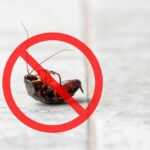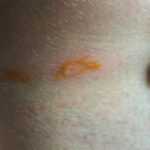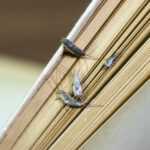Earwigs: Identification and Control Tips
Earwigs are insects that often become pests in homes and gardens due to their distinctive pincers and preference for damp environments. In this article, you will learn how to identify different earwig species, understand their behavior and diet, and discover effective methods to control and prevent infestations. Despite common myths, earwigs cannot harm people and do not pose a threat to human health or safety.
- Proper identification of earwigs, particularly the European earwig, is crucial for targeted control methods and effective management.
- Maintaining dry conditions and removing organic debris are key strategies for preventing infestations in gardens and homes.
- A combination of nonchemical methods, such as trapping and hand removal, alongside responsible pesticide use, is essential for managing populations effectively.
Identifying Earwigs
Proper identification is necessary for effective control. Most species measure less than three-quarters of an inch and have a reddish-brown color. One of the most distinctive features is their curved pinchers at the abdomen, used for protection and catching prey. These pinchers also vary between males and females, with males having curved cerci and females having straight ones.
There are many species of earwigs found in North America, and about half of these species are introduced from other regions.
These insects possess fan-shaped wings hidden under their wing coverings, though not all can fly. Their flattened bodies enable them to hide in narrow crevices, making them elusive pests. These characteristics aid in the identification and management of populations.
European Earwig Forficula Auricularia
The European earwig, also known as the common earwig, is the most prevalent species in many regions. These european earwigs are usually brown to black in color, fitting the typical description. They are easily distinguishable by their pincers and overall appearance, including the striped earwig.
There are 28 different species found in the United States, but the European earwig (Forficula auricularia) is particularly widespread and often the one causing the most issues in gardens and homes. Recognizing this species allows for targeted control measures.
Life Cycle of Earwigs
Knowledge of the life cycle is vital for population management. They typically mate in the fall, and female earwigs dig protective cells in the ground to lay eggs and care for their developing nymphs, producing 30 to 50 eggs in one batch. Young earwigs emerge from these eggs; these young earwigs are lighter in color and are cared for by the female, who guards and cleans the eggs and may relocate them if disturbed.
Once the eggs hatch, the wingless immature earwigs resemble adult earwigs but are smaller and lack wings. These immature earwigs take two to three months to develop into the adult earwig form. Populations can grow rapidly during this period, so timely intervention is essential to avoid large infestations.
Habitats and Hiding Places
These insects thrive in moist environments, often found under organic debris or in damp soil. Earwigs are commonly found in damp areas and moist places, such as under mulch and in mulched areas, where they seek shelter during the day. They prefer hiding in dark, damp places, such as under rocks, logs, mulch, and leaf litter. Moist conditions are ideal for their survival, providing the moisture and cover needed to survive and reproduce. Earwigs may also share similar habitats with other insects and pests.
In gardens, they can be found around decaying plant matter and living plants, where they feed on various organic materials. Understanding their preferred habitats aids in the effective location and management of populations.
Behavior and Diet
The earwig is an insect with diverse feeding habits. Earwig feeding primarily includes decaying plant material, pollen, and animal matter such as dead insects and other organic remains, playing a role in the decomposition process. By consuming both plant material and animal matter, earwigs contribute to natural cleanup and support healthy soil and plant growth. However, earwig feeding can also lead to damage to garden plants and seedlings.
These insects use their pinchers for protection, to catch prey, and to defend their offspring from predators. While they can protect themselves effectively, their presence in homes is often due to seeking food or shelter from adverse weather conditions.
Feeding Damage
Feeding damage is a major concern for gardeners. Earwig feeding damage can be identified by the small, irregular holes in leaves and other plant parts, particularly on seedlings and young plants. This type of earwig damage may resemble that caused by other pests, such as slugs or cutworms, but unlike slugs, there is no slime trail.
This type of damage can significantly impact the health and growth of plants, making it crucial to identify and manage populations early on. Recognizing signs of earwig damage and distinguishing it from damage caused by other pests allows for timely action to protect your garden.
Beneficial vs. Pest Roles
They can play dual roles in gardens, acting as both pests and beneficial insects. While the European earwig is the most common species that can damage garden plants, most earwigs are harmless and can help control pest populations in the garden. These insects are generally harmless to people and can help control other pest populations.
When using pesticides for pest management, it is recommended to apply them at night to minimize risks to beneficial insects like these. It’s important to balance pest control strategies to preserve beneficial individuals while managing pests for a healthy garden ecosystem.
Preventing Infestations
Preventing infestations involves proactive steps to reduce preferred habitats. These insects favor dark, damp environments for living and laying eggs, so managing moisture levels around your home is crucial. Moist organic areas, such as mulch and decaying plant matter, attract them, making it important to keep these areas dry and clean.
For long-term control, eliminate or dry out their preferred habitats. Inspecting and sealing cracks at ground level with caulking compound is an effective way to prevent earwig entry. Pay special attention to ground-level entry points and use a caulking compound to seal cracks and crevices around the foundation and exterior walls. Regular maintenance and environmental management can significantly reduce the likelihood of infestations.
Eliminate Damp Conditions
Eliminating damp conditions is a key strategy in preventing infestations. Trim vegetation around the home to reduce moisture and provide less habitat. Regular maintenance, such as keeping mulch away from foundations, can help deter these pests.
Using fans or dehumidifiers helps lower moisture levels indoors, making it uncomfortable for them. A dry environment is essential because they thrive in damp conditions. Routine cleaning and removing plant debris can also make your home less inviting.
Seal Entry Points
Preventing entry requires sealing points of access. Applying weather stripping can help close off entry points around doors and windows. Regularly inspecting and repairing screens on vents and windows can effectively reduce the chances of entry.
Sealing cracks, gaps, and other entry sites plays a key role in preventing infestations. Maintaining barriers and ensuring there are no easy entry points can significantly reduce the risk indoors.
Nonchemical Control Methods
Managing populations with nonchemical methods is eco-friendly. Effective management often involves combining trapping with reducing hiding places and moisture levels.
Additional trapping materials such as corrugated cardboard and burlap bags can be placed in gardens to trap earwigs, as these provide dark, moist hiding spots that attract them. Shallow containers filled with soapy water or baited with fish oil are also effective ways to trap earwigs, as the insects are drawn to the bait and can be easily eliminated.
These methods are not only environmentally responsible but also safe for households with children and pets.
Trapping
Trapping can be an effective way to manage populations. Common traps include low-sided cans filled with oil, rolled-up newspapers, and bamboo tubes. Homemade traps with shallow containers of vegetable oil and bait can attract and trap these insects, preventing damage.
Placing traps in high activity areas, such as damp or dark locations, increases the chances of capturing them. This method helps in reducing numbers without the need for chemical treatments.
Hand Removal and Vacuuming
Hand removal and vacuuming are practical methods for dealing with small numbers indoors. Using a vacuum cleaner can quickly eliminate these pests from indoor spaces. Managing small indoor infestations can be effectively done by sweeping or vacuuming.
It’s important to promptly dispose of captured insects to prevent reinfestation. Wearing gloves during hand removal can help avoid potential pinching from pincers.
Chemical Control Options
Chemical control options are sometimes necessary for managing large populations. Pesticides are used in gardens to protect plants from damage. If populations are large, insecticide treatments, such as granules or sprays, can be applied to outdoor areas like mulch or soil to control earwig populations. Outdoor chemical treatment might be needed to effectively manage the infestation.
Chemical treatments can significantly reduce populations during an infestation, providing a quick and efficient solution. However, they should be used responsibly to minimize environmental impact.
Choosing the Right Insecticide
Selecting the appropriate insecticide is vital for effective control. The label is the law, meaning it must be strictly followed when using pesticides. Adhering to pesticide label directions guarantees safe and effective use.
Pesticide labels are crucial in the selection and application of insecticides for control. It is essential to select insecticides that are effective and safe for other insects and the environment.
Safety Precautions
Implementing safety precautions is essential when using chemical control methods. Following the label instructions is crucial as it serves as a legal guideline for pesticide use. Wearing protective gear, such as gloves and masks, is recommended when applying insecticides to ensure personal safety.
Protective gear is necessary when using pesticides to minimize skin contact and avoid inhalation. Choosing pesticides based on their effectiveness and safety for the environment is essential for responsible pest management.
Inside the Home
These insects do not live long indoors, but their presence can still be unsettling. Earwigs inside the home may be found near air conditioning units or other sources of moisture. Even after sealing entry points, earwigs inside can be removed with a vacuum. Alternatively, you can also use a broom and dustpan for removal.
Prompt action is needed to manage indoor infestations and prevent them from escalating.
Indoor Traps and Barriers
Indoor traps and barriers can help control populations inside the home. Sticky glue traps are effective for capturing them and can be placed in areas where they have been spotted. A simple DIY trap can be made using a lidded container filled with cooking oil to attract and drown the insects.
Setting traps in dark areas can capture these pests and reduce their indoor population. Traps are a useful tool to control populations indoors and prevent their spread.
Cleaning and Maintenance
Regular cleaning and maintenance are crucial in preventing infestations indoors. Removing plant debris can help prevent them from finding suitable hiding places inside your home. Keeping indoor areas clean and dry reduces the likelihood of infestations.
Proper weather stripping around doors and windows helps prevent entry. Regular cleaning and maintenance are essential steps in keeping your home pest-free.
Managing infestations requires a combination of identification, prevention, and control strategies. By understanding the life cycle, behavior, and habitats, you can take proactive steps to prevent infestations. Nonchemical methods, such as trapping and reducing moisture, can be effective, but chemical treatments may be necessary for large populations.
Always follow safety precautions when using insecticides and to balance pest control strategies to preserve beneficial insects. With these tips and methods, you can effectively manage populations and protect your home and garden.
Frequently Asked Questions
What are these insects a warning of?
They may indicate the presence of harmful wood-destroying pests, such as carpenter ants or termites, suggesting potential damage to your home. Addressing this issue promptly is essential to prevent further infestations and damage.
How can I identify them in my garden?
Look for insects that are reddish-brown in color and possess curved pinchers at their abdomen. Males will display curved cerci, while females will have straight cerci.
What damage can they cause to plants?
They can cause damage by creating small, irregular holes in leaves, resembling the effects of slug damage but without the accompanying slime trail. This feeding can undermine plant health if not managed.
How can I prevent infestations in my home?
To effectively prevent infestations, reduce moisture levels, seal entry points, and maintain a regular cleaning routine in your home. This proactive approach will help create an environment less conducive to their presence.
Are they beneficial or harmful?
They can be beneficial as they help control pest populations, but they may also harm garden plants. Therefore, their impact can vary depending on your gardening situation.





